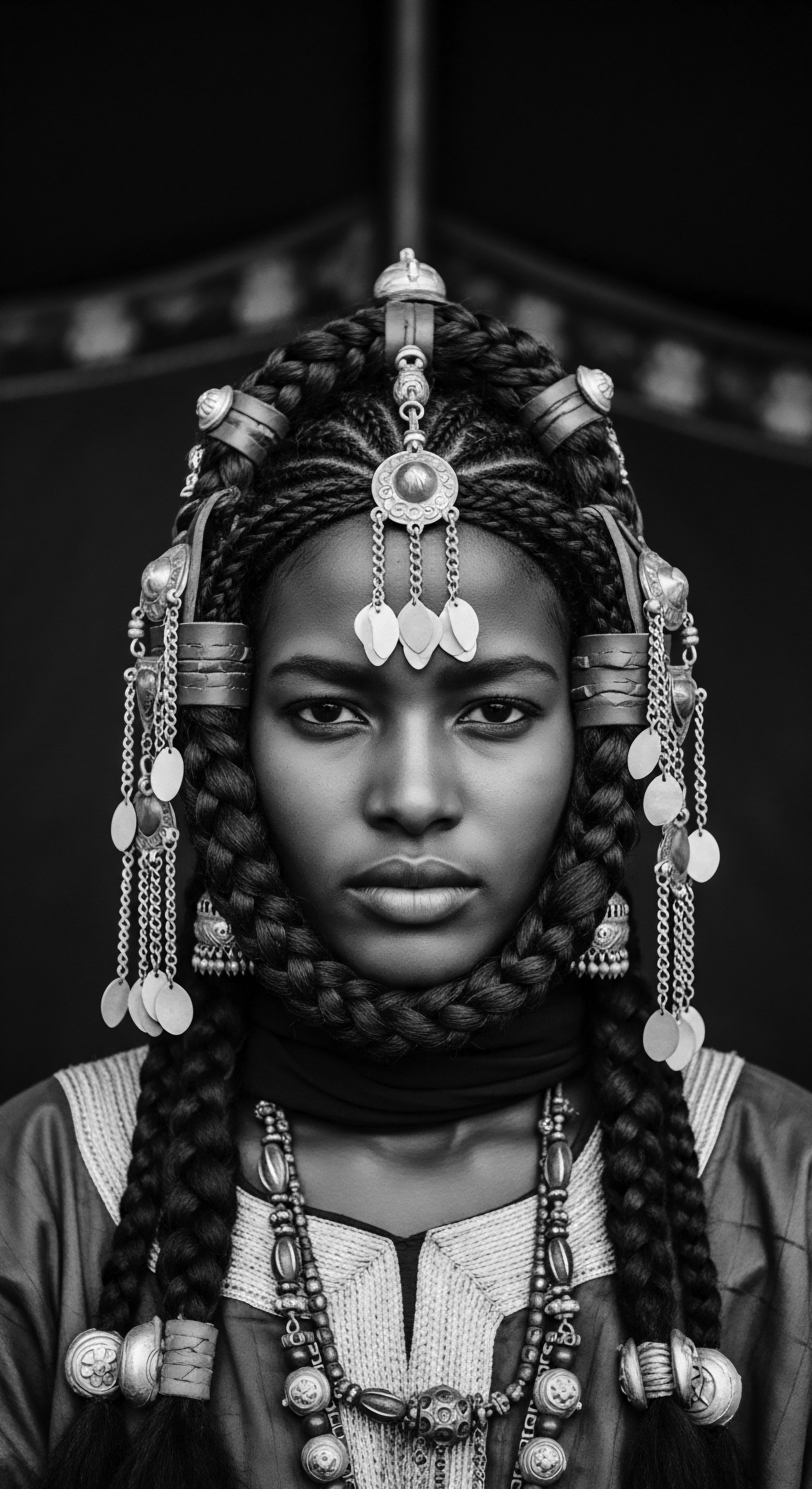
Roots
When we speak of textured hair, we are not simply referring to a biological structure; we are speaking of a living archive, a vibrant thread connecting us directly to ancestral wisdom and generational experience. The questions we pose about modern styling tools are, at their very core, an invitation to trace lineages, to honor the ingenuity of those who came before us. Every comb, every pick, every binding material held in our hands today echoes the movements and intentions of countless hands across time, each shaping strands not merely for aesthetics, but for survival, status, spirit, and identity. This exploration of what historical tools inform modern textured hair styling becomes a journey through shared heritage, a quiet conversation with the past that illuminates our present.

The Sacred Strand and Its Ancient Structure
To truly grasp the influence of historical tools, one must first recognize the intrinsic nature of textured hair itself, a unique biological marvel. The elliptical cross-section of the hair shaft, its coiling growth pattern, and the varying distribution of disulfide bonds distinguish it in a fundamental way. In ancestral communities, this unique structure was not just observed; it was understood through generations of practice.
Knowledge of how hair moved, how it responded to moisture, how it held a style, was passed down through observation and communal care. Early tools, though seemingly simple, were carefully crafted to interact with this specific architecture, respecting its inherent strength and delicate nature.
Consider the earliest forms of what we might call tools ❉ fingers, for instance. The human hand, with its dexterity, was the first and perhaps most potent implement for detangling, twisting, and sectioning. This basic, innate interaction laid the foundation for more specialized instruments.
The act of finger-combing, of gently separating strands, mirrors the action of a wide-tooth comb today, designed to minimize friction and breakage on curls and coils. This profound connection between human touch and hair structure has remained constant, a testament to the primal understanding of textured hair’s needs.

Early Implements and Their Purpose
The initial tools fashioned by our forebears were direct responses to immediate needs ❉ hygiene, presentation, and cultural expression. These implements, often crafted from readily available natural resources, tell a compelling story of human adaptability and creativity.
- Bone Combs ❉ Fashioned from animal bones, these early combs often featured widely spaced teeth, ideal for navigating dense, coily hair without snagging. Their purpose transcended mere detangling, often serving as decorative elements or symbols of status within various African societies.
- Wooden Picks ❉ Carved from hardy woods, these pointed tools were exceptional for lifting and styling hair, adding volume, or creating precise parts within intricate patterns. Their design allowed for manipulation of individual strands or small sections, a precursor to modern styling picks.
- Natural Fibers and Leaves ❉ Beyond rigid tools, pliable materials such as grass, palm fronds, or animal sinew were used to bind, extend, or adorn hair. These organic elements speak to a profound connection with the natural world and a deep respect for its offerings in hair care and styling.
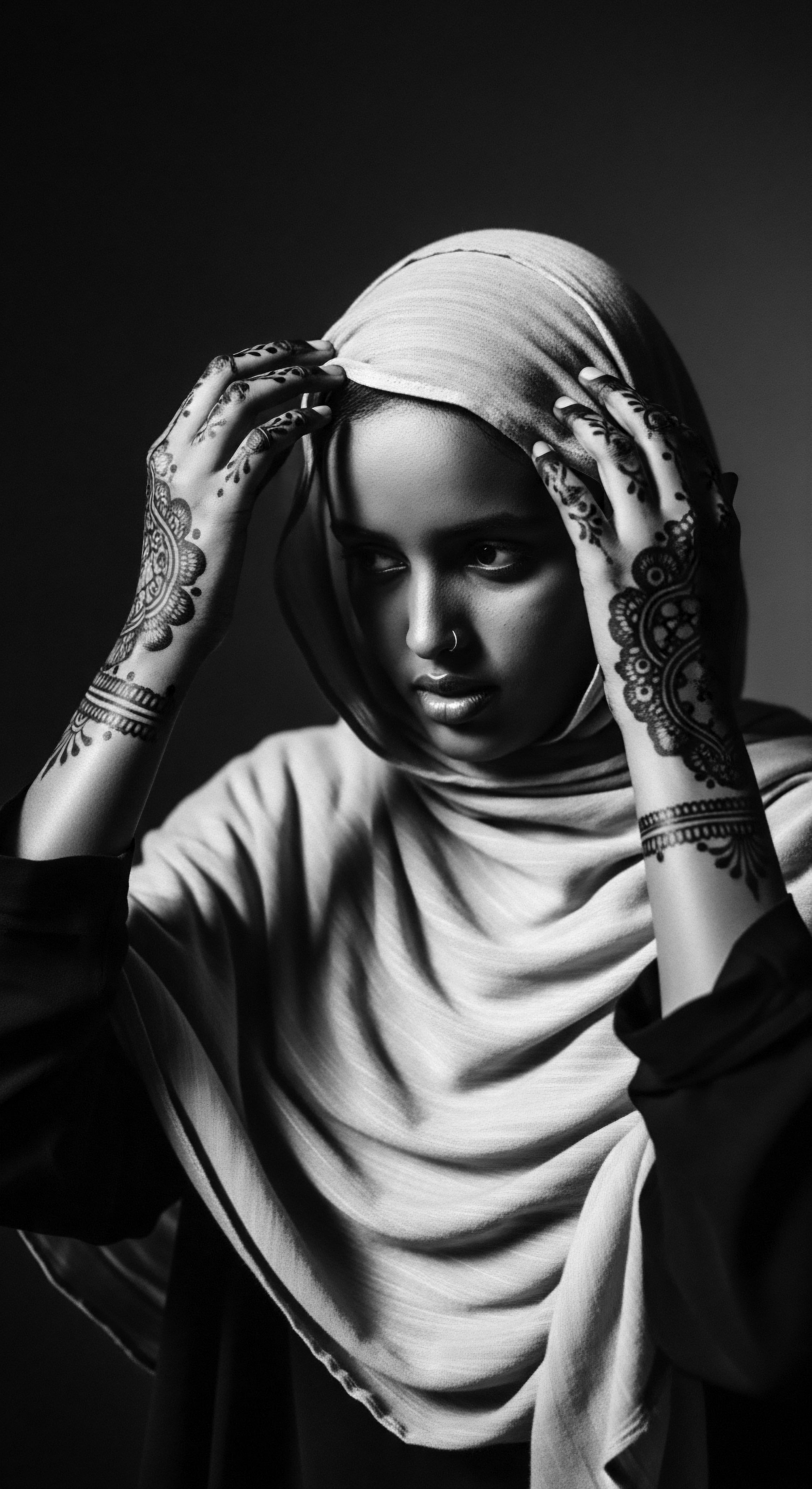
How Did Ancestral Classifications Shape Tool Development?
Different indigenous African societies developed their own ways of categorizing hair, often tied to lineage, age, marital status, or spiritual beliefs, rather than a rigid numerical system. This nuanced understanding of hair diversity directly influenced the types of tools created and how they were used. A tool ideal for a tightly coiled pattern might be different from one used on a looser curl, reflecting an intimate knowledge of hair characteristics that predates modern trichology. For example, some communities recognized hair that clumped easily versus hair that remained individualistic, adapting their detangling and styling techniques—and thus their tools—accordingly.
This heritage of adaptive tool creation speaks volumes about the detailed observations made by these communities. They understood that no single tool served all hair types, even within the same community, leading to a rich diversity of instruments. The absence of harsh chemicals in their hair care meant a reliance on mechanical methods, refined over centuries, to manage, style, and protect hair. These methods, inextricably linked to their tools, formed the foundational knowledge that continues to resonate in modern textured hair care.
The earliest hair tools were extensions of the human hand, meticulously crafted from nature’s bounty to meet both the practical and spiritual needs of textured hair.

Ritual
Hair care in ancestral traditions was seldom a solitary or mundane activity; it was a deeply communal ritual, a moment of connection, education, and artistic expression. The tools employed during these rituals were not just instruments; they were conduits of care, carriers of stories, and shapers of identity. Understanding this context helps us appreciate how the purpose and design of historical tools flow into our contemporary styling practices. The act of styling, whether simple or elaborate, was a tender thread connecting generations, often performed by elders for younger members, solidifying bonds and transmitting cultural wisdom.

The Hands That Style ❉ Communal Practices
In many West African societies, for instance, hair styling was a significant social event. Children learned intricate braiding patterns from their mothers and grandmothers, not just by observation, but by active participation, handling the very tools used by their ancestors. This apprenticeship was a living library, where the knowledge of how to manipulate hair and apply specific tools was imbued with cultural meaning. The rhythmic pulling and twisting of hair, often accompanied by storytelling or song, transformed a practical task into a sacred performance.
The tools used in these settings were designed for both efficiency and comfort during long styling sessions. Consider the enduring African hair pick. Its long, slender prongs and ergonomic handle allow for gentle lift and separation, making it suitable for creating volume without disrupting defined curl patterns.
This design, optimized for working with dense, coily textures, has remained remarkably consistent across centuries, speaking to its timeless effectiveness. Modern picks, while made from different materials, largely retain this ancient form, a testament to its practical brilliance.
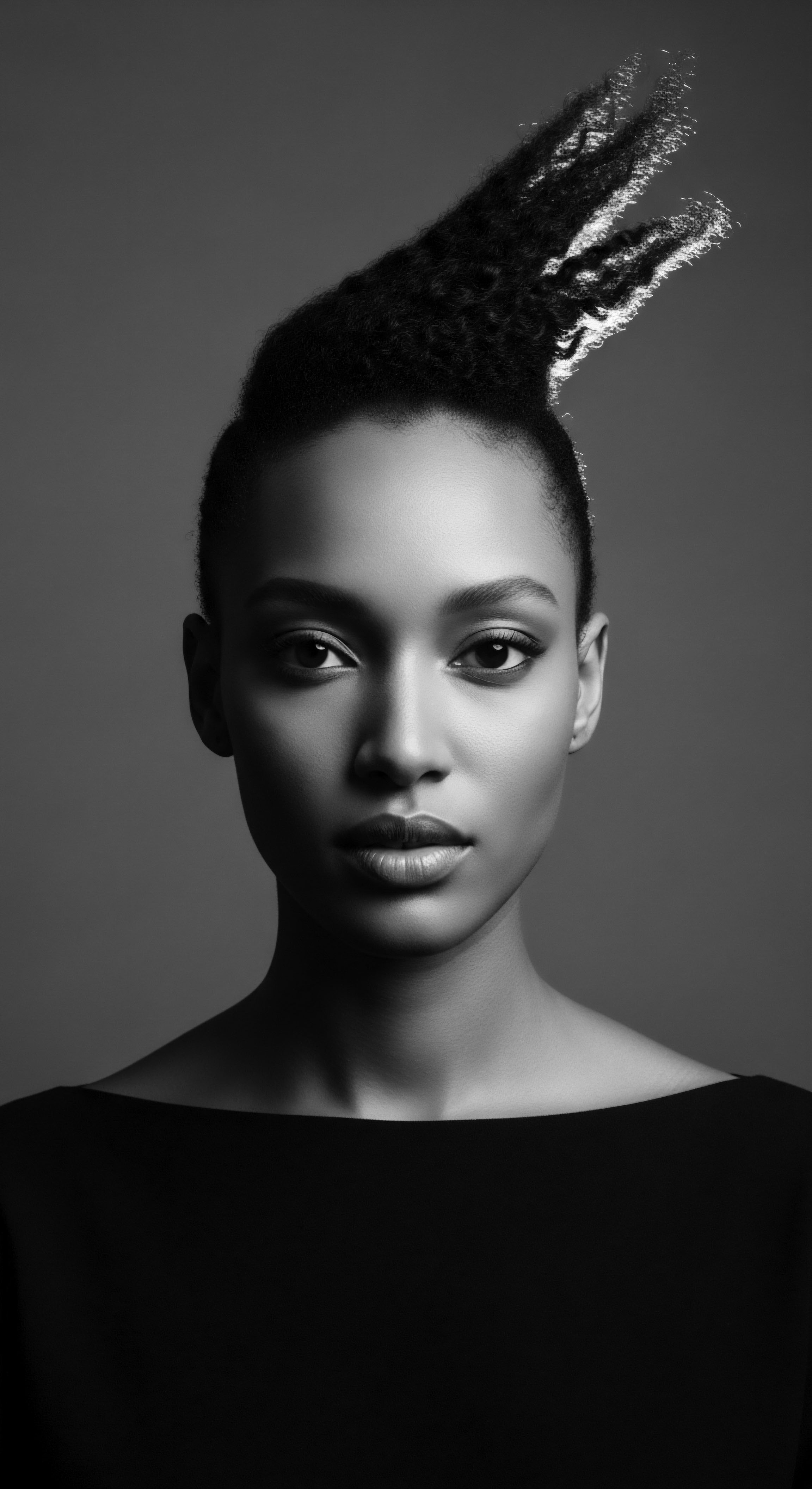
How Do Ancestral Protective Styles Shape Modern Styling Tools?
Many modern protective styles—braids, twists, locks—have direct ancestral origins, often dating back thousands of years. The tools used for their creation were fundamental to their formation and longevity.
| Historical Tool/Method Bone or Wood Picks for sectioning and lifting |
| Modern Parallel/Influence Plastic or Metal Afro Picks, Rattail Combs for parting |
| Heritage Connection Maintains hair volume and separates coils without causing undue stress, echoing ancient methods of managing density. |
| Historical Tool/Method Fingers and Natural Fibers for twisting and binding |
| Modern Parallel/Influence Styling Gels and Creams, small Rubber Bands for twists/braids |
| Heritage Connection Continues the tradition of creating defined, protective styles that minimize manipulation and preserve hair health. |
| Historical Tool/Method Heated Stones or Metal Rods for stretching/straightening |
| Modern Parallel/Influence Ceramic Flat Irons and Blow Dryers |
| Heritage Connection While materials differ, the underlying principle of thermal alteration for styling textured hair persists, albeit with greater control and less direct heat. |
| Historical Tool/Method Hair Threading Needles and Threads for coiling/wrapping |
| Modern Parallel/Influence Hair Threading Tools, various Threads (cotton, synthetic) |
| Heritage Connection A direct continuation of an ancient technique for stretching and setting hair, particularly common in West Africa, providing length without heat. |
| Historical Tool/Method These parallels reveal a continuous lineage of ingenuity, where ancient techniques and tools inform the design and application of modern hair care instruments. |

Adornment and Its Tools
Beyond shaping, tools were integral to adornment, a practice rich in symbolism. Shells, beads, coins, and precious metals were often woven into or attached to hair, signifying social standing, marital status, or tribal affiliation. The needles, awls, and fine strings used for these intricate additions were specific implements, designed for precision and durability.
The practice of hair threading, common in regions of West Africa, provides a compelling example of a historical tool influencing modern techniques. Fine threads—originally made from cotton or other natural fibers—were wrapped tightly around sections of hair, stretching and elongating the curls without the use of heat. This technique not only offered a protective style but also prepared the hair for further styling, creating a smoother, more manageable canvas. Today, hair threading is experiencing a quiet revival, with stylists using modern, stronger threads, but the fundamental tool and technique remain unchanged, a direct link to an enduring ancestral practice.
Hair care in ancestral communities was a living art, where tools were not just objects but extensions of cultural identity, fostering connection and transmitting ancient wisdom.
A notable case study involves the Himba people of Namibia. Their iconic hair, meticulously styled with a mixture of ochre (otjize), butterfat, and aromatic resins, is a powerful cultural marker. The application of this paste, and the creation of their distinctive dreadlocks (dreadlocks that begin from infancy), involves specific wooden sticks and animal sinew for twisting and shaping. This practice, passed down through generations, highlights how tools are inseparable from the ritualistic and social aspects of textured hair styling.
(Ndungire, 2017). The tools themselves become sacred, imbued with the history of their use and the cultural significance of the styles they create.
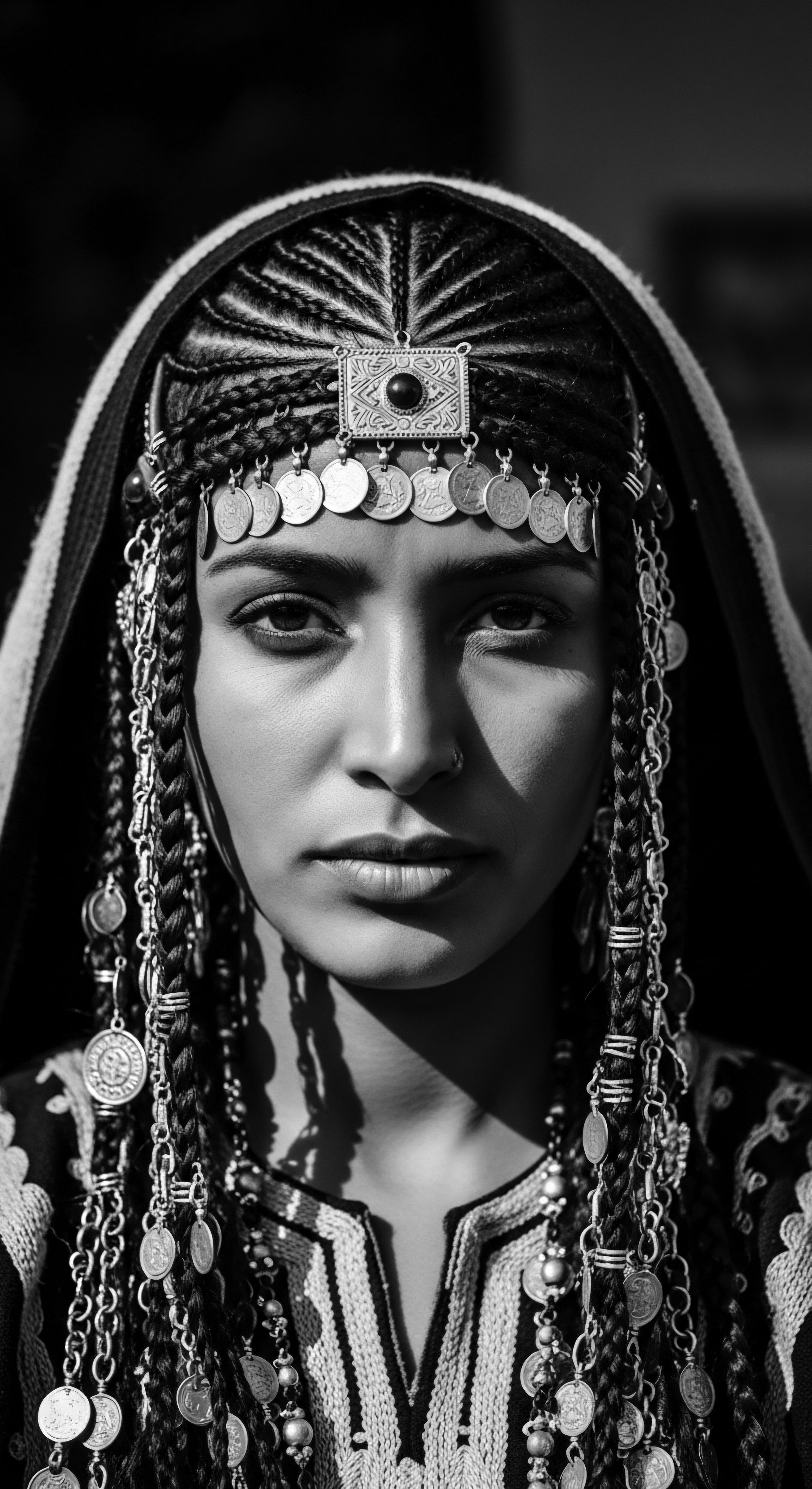
Relay
The journey of textured hair tools from ancient ingenuity to contemporary sophistication is a fascinating relay race of knowledge. The elemental biology of the hair strand, understood intuitively by ancestors, now receives validation from advanced trichology. This deepening insight informs the materials, design, and function of modern tools, yet their foundational principles often echo those crafted by hands long past. We are not simply creating new tools; we are iterating on a heritage of innovation, refining and adapting the wisdom of the ages to suit contemporary needs and understandings.

From Element to Engineered Materials ❉ Thermal Shaping’s Legacy
The manipulation of hair with heat has a surprisingly long and diverse history across many cultures, including those with textured hair. While modern ceramic flat irons and tourmaline-infused blow dryers seem far removed from ancient practices, the core concept of using warmth to temporarily alter the hair’s structure is deeply rooted.
In ancient Egypt, for instance, rudimentary forms of curling irons, heated metal rods, were employed to style both natural hair and wigs. Similarly, some African communities utilized heated stones or carefully managed embers to gently stretch or seal the ends of braids and twists, promoting definition and minimizing frizz. These early thermal applications, while crude by today’s standards, share a common aim ❉ to manage the hair’s natural curl pattern for specific styling results.
The tools have changed dramatically, moving from direct, unregulated heat to precisely controlled temperatures and materials that distribute warmth evenly, but the underlying drive to shape the hair using thermal energy remains a continuous thread. The focus has simply shifted from raw heat to protecting the hair from heat while still achieving the desired effect.
Modern hair tools, while technologically advanced, fundamentally build upon the intuitive understanding of textured hair’s needs honed by ancestral practices.

Digital Archives and Ancestral Validation
Our contemporary scientific understanding often illuminates the wisdom of ancestral practices, providing a technical lexicon for what was once simply known through generations of observation. For example, the wide-tooth comb, a staple in modern textured hair care, closely mirrors the broad-toothed combs found in archaeological digs across Africa. The scientific rationale is clear ❉ wider spacing between teeth reduces mechanical stress, minimizing breakage on delicate curls and coils. Ancestors understood this through practical experience; modern science quantifies and validates it.
Similarly, the very act of using fingers for detangling or applying products, a common recommendation today for reducing friction, directly mirrors the earliest forms of hair manipulation. This seemingly simple action is now supported by biomechanical studies showing how the soft pads of fingers cause less shear force on the hair shaft than many fine-tooth combs. This scientific underpinning allows us to appreciate the profound, empirical knowledge that guided tool selection and application in times past.

How Do Modern Tools Extend Ancestral Concepts?
The concept of protective styling, deeply ingrained in textured hair heritage, continues to inform the innovation of modern tools. Where ancestors used natural fibers to wrap and extend hair, we now have advanced synthetic braiding hair and specialized needles that allow for more intricate and durable extensions. Diffusers, for instance, are modern inventions designed to dry curly hair gently, mimicking the effect of air-drying or the gentle, indirect warmth of historical sun-drying, which prevented excessive frizz and maintained curl integrity.
The evolution from a simple wooden pin to a sophisticated hair clip, or from natural plant extracts to chemically optimized styling gels, reflects a continuous drive for greater efficiency, precision, and convenience. Yet, the foundational purpose – to secure, to define, to protect, to adorn – remains unchanged, a direct legacy of the historical tools and techniques that came before. The materials may differ, the technology may be more advanced, but the heart of their function beats with ancestral rhythms.
- Detangling Tools ❉ Evolved from wide-set bone or wooden combs to flexible plastic or silicone detangling brushes and broad-tooth combs, all designed to glide through curls with minimal snagging.
- Styling Tools ❉ Advances from threading needles and simple sticks for coiling to specialized styling clips, curl definers, and even programmable curling wands that replicate specific curl patterns.
- Heat Application Tools ❉ From heated stones and embers to precisely temperature-controlled flat irons, curling irons, and hooded dryers, offering varied thermal styling options with increased safety.

Reflection
The historical tools that inform modern textured hair styling are more than mere artifacts; they are echoes of ingenuity, resilience, and an unbreakable connection to heritage. Every gentle stroke of a wide-tooth comb, every careful sectioning with a rattail comb, every thoughtful application of product with fingertips, carries the whisper of ancestral hands that performed similar acts with bone, wood, or simple thread. This is the enduring ‘Soul of a Strand,’ a testament to the continuity of care and the profound ways in which hair serves as a living, breathing archive of identity and cultural narrative.
Our contemporary understanding of textured hair, now supported by scientific inquiry, does not diminish these ancient practices but rather illuminates their inherent wisdom. The journey from elemental tools to sophisticated modern implements is not one of replacement, but of evolution and reinterpretation. We are not simply styling hair; we are engaging in a dialogue across generations, honoring the legacy of those who first understood the unique properties of curls and coils.
The tools we use today are a quiet celebration of this rich lineage, allowing us to carry forward a heritage of self-expression, protection, and collective beauty. The future of textured hair styling, then, will always be rooted in its deep and resonant past.
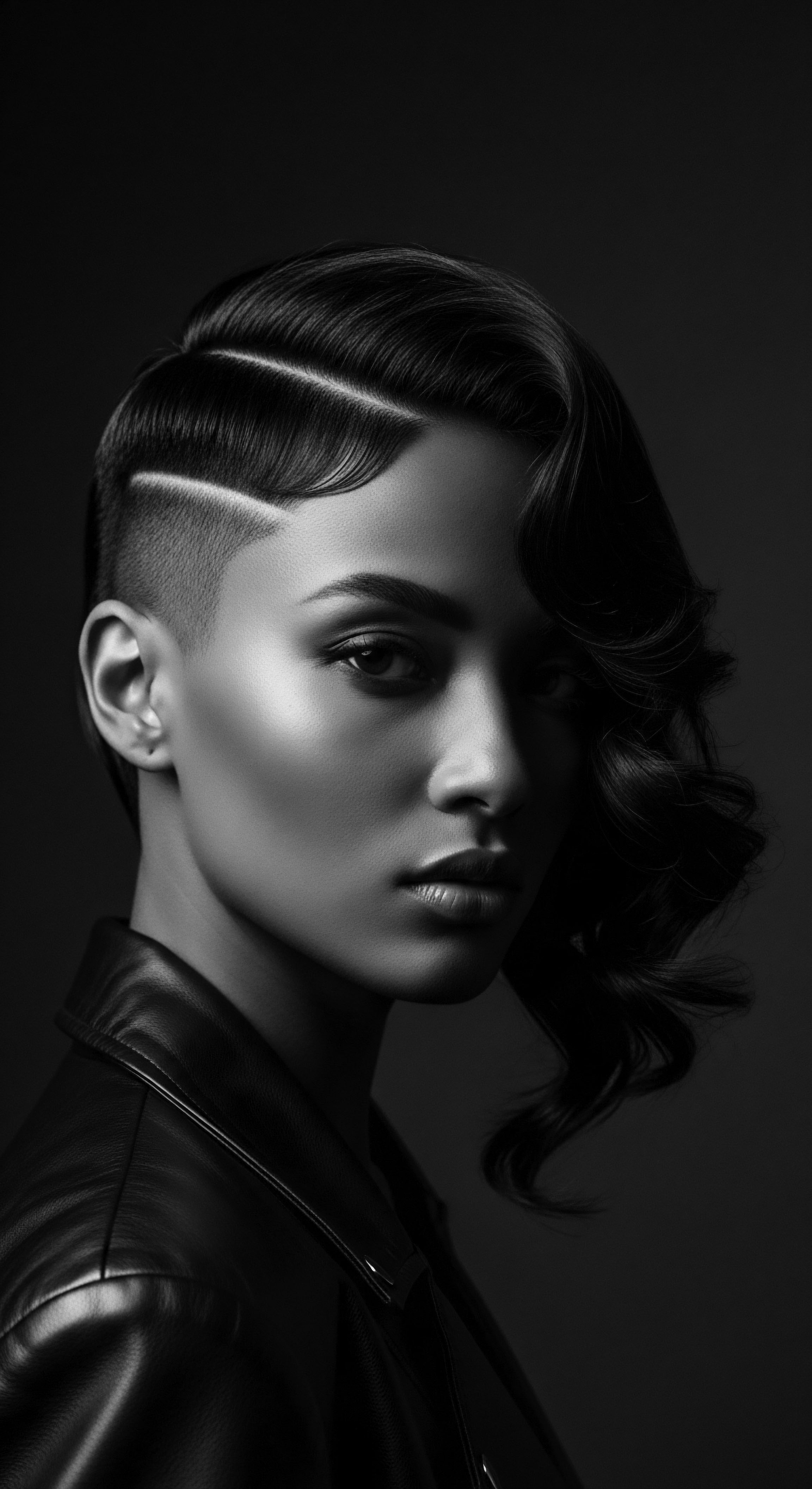
References
- Ndungire, A. (2017). African Hair Adornment ❉ Cultural Significance and Traditional Practices. University of Nairobi Press.
- Byrd, A. (2001). Hair Story ❉ Untangling the Roots of Black Hair in America. St. Martin’s Press.
- White, S. (2009). Hair in African Art and Culture. Museum for African Art.
- Mercer, K. (1994). Welcome to the Jungle ❉ New Positions in Black Cultural Studies. Routledge.
- Tharps, L. (2014). Hair Story ❉ The Definitive Historical Account of Black Hair in America. St. Martin’s Press.
- Caldwell, R. (2009). Weaving Hair into History ❉ The Afro Comb in Context. Pitt Rivers Museum Press.
